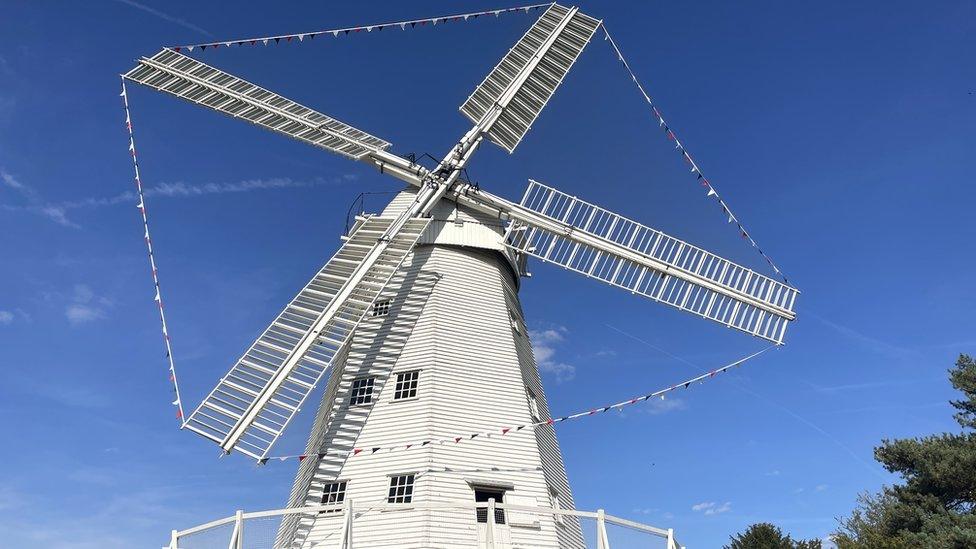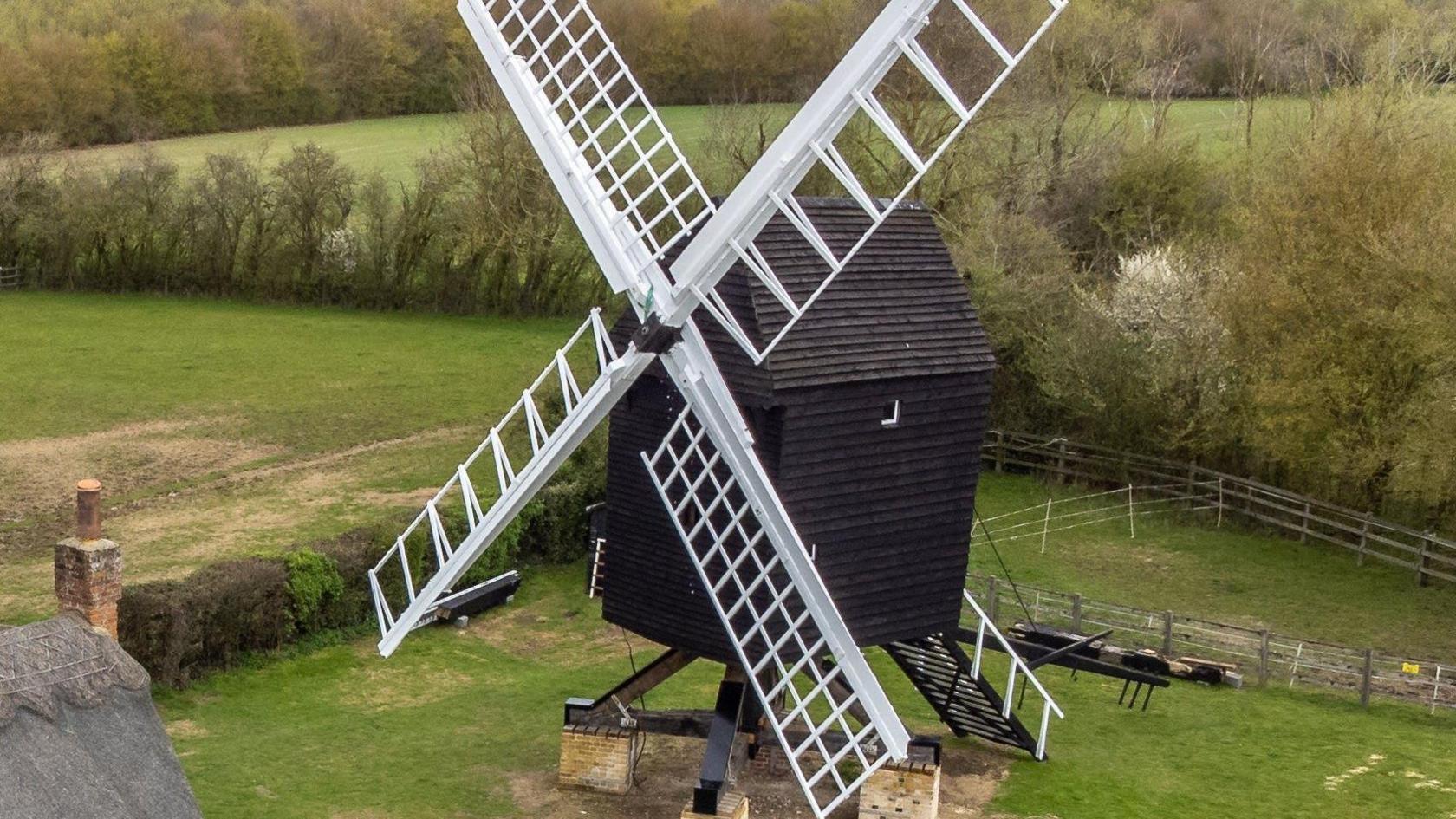Hotel that inspired Dickens on 'at risk' list
- Image source, Historic England Archive

Image caption, Major repairs are planned for Oldway Mansion, Paignton, a 19th Century millionaire’s dream home which later became part of community life in Torbay.
1 of 7
At a glance
Historic England has added 159 sites to its Heritage at Risk Register
They include a hotel that inspired Charles Dickens and a mansion used as a hiding place of some of those behind the Gunpowder Plot
203 sites have also been saved and removed from the register, giving a total of 4,871 at risk places
- Published
A hotel that once inspired Charles Dickens and later welcomed The Beatles has been added to a list of historic sites at risk of neglect, decay or inappropriate development.
Historic England has included 159 sites to its Heritage at Risk Register over the last year, including The Great White Horse Hotel in Suffolk.
More than 200 sites have also been saved and removed from the register, leaving a total of 4,871 at risk places, 48 fewer than last year.
Arts and Heritage Minister Lord Parkinson said the register had "helped to focus efforts to preserve cherished sites across the country".
The register provides an annual snapshot of the health of England's valued historic buildings and places.
The Great White Horse Hotel in Suffolk has hosted King George II, Admiral Lord Nelson and The Beatles over the years. It also served as the inspiration for regular guest Charles Dickens' novel The Pickwick Papers.
Holbeche House, a mansion in the West Midlands, has also been added to the list. It is where some of those behind the failed Gunpowder Plot of 1605 took shelter and hid before they were caught.
Other new at risk sites include:
The Church of St Mary in Suffolk, which was painted by landscape artist John Constable in his view of Stoke-by-Nayland around 1830
Dane John Mound, a popular monument in Kent which is at risk of erosion
Upminster Tithe Barn, a substantial thatched barn built in the mid-15th Century for Waltham Abbey
The picturesque Polegate Windmill in East Sussex
Oldway Mansion in Devon, once owned by Isaac Singer, the millionaire founder of the sewing machine company
Significant sites saved and removed from the register in 2023 include:
Holmfirth Conservation Area in West Yorkshire, which featured in the TV comedy series Last of the Summer Wine
Bourn Mill in Cambridgeshire, one of the oldest windmills in England
Tolpuddle Old Chapel in Dorset, used for worship by agricultural workers who became known as the Tolpuddle Martyrs
Many buildings and sites have been rescued with the help of local people, communities, charities, owners, and funders including The National Lottery Heritage Fund.
This year marks the 25th anniversary of the publication of the first Heritage at Risk Register, previously known as the Buildings at Risk Register.
Since it began in 1998, around 6,800 entries have been removed - around three quarters of the original total.
'Preserve cherished sites'
Duncan Wilson, chief executive of Historic England, said it was inspirational to see communities coming together to help save historic buildings and places and find new uses for them.
"The Heritage at Risk programme shines a light on our historic sites most in need and can help to attract funding," he said.
"After a quarter of a century... we are celebrating how many places have been saved and continue to find new ways to involve local people in caring for and enjoying their heritage."
Lord Parkinson of Whitley Bay said the register had "helped to focus efforts to preserve cherished sites across the country" and it was "heartening to see that so many sites have had their futures secured and have been taken off the register".
- Published9 November 2023

- Published9 November 2023

- Published9 November 2023

- Published9 November 2023






